Today’s Current Affairs: 18th June 2024 for UPSC IAS exams, State PSC exams, SSC CGL, State SSC, RRB, Railways, Banking Exam & IBPS, etc
Table of Contents
Risk Manager Of The Year 2024 : RBI

The Reserve Bank of India (RBI) was presented with the “Risk Manager of the Year Award” by Central Banking, a distinguished organization that is headquartered in London, United Kingdom.
- This honor emphasizes the efforts that the Reserve Bank of India (RBI) has made to strengthen its risk management policies and its essential role in ensuring the stability of India’s financial ecosystem.
- The award was handed to Mr. Manoranjan Mishra, who serves as the Executive Director of the Reserve Bank of India (RBI).
- He accepted the honor on behalf of the organization.
- Central Banking praised the Reserve Bank of India (RBI) for the tremendous gains it has made in risk culture and awareness, which has established a standard for other central banks throughout the world.
- The Reserve Bank of India (RBI) was established on April 1, 1935, under the Reserve Bank of India Act, 1934.
- Originally privately owned, it was nationalized on January 1, 1949, to serve the nation’s economic interests more effectively.
Streptococcal Toxic Shock Syndrome : High Alert In Japan

Japan’s health officials are on high alert because the number of Streptococcal Toxic Shock Syndrome (STSS) cases has increased significantly.
- STSS is a serious illness that usually ends in death.
- So far this year, on June 2, 977 cases have been reported, more than the 941 cases reported all last year.
- Because of this scary number, health officials and doctors are working extra hard to stop and understand how quickly this is spreading.
- Streptococcal Toxic Shock Syndrome (STSS) is a disease brought on by group A Streptococcus bacteria infections.
- When these bacteria get into deep tissue or the bloodstream, they release strong toxins that cause a severe inflammatory reaction that quickly affects many organs.
- Most people don’t get this disease, and big risk factors include skin wounds and other health problems that lower immunity.
Symptoms of STSS:
- Within 24 to 48 hours, STSS symptoms start quickly and are very bad.
- They start with fever, chills, and muscle pain and then move on to nausea and vomiting.
- It gets so bad that low blood pressure, a fast heart rate, fast breathing, and the loss of multiple organs happen.
- For kids, the bacteria can cause strep throat, but for adults, it can lead to more serious health problems like major limb pain, tissue death, and organ failure.
Meaty Rice:
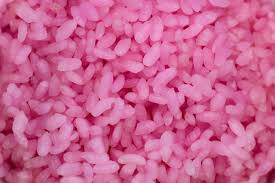
Scientists at Yonsei University in Seoul, South Korea, are working on putting grown beef cells into rice grains.
- This is a groundbreaking use of new food technologies that is changing the world. The goal of this new invention, called “meaty rice,” is to be a more environmentally friendly source of protein that doesn’t involve raising animals.
- This could completely change the way food is produced around the world.
- In this process, fish gelatine is spread over a rice grain to help the injected beef cells stick.
- After that, these grains are grown in a Petri dish for about 11 days so that the cells can multiply.
- Professor Hong Jin-kee uses the fact that rice has a slightly open structure to his advantage.
- This makes it a great place for cells to grow evenly inside the grain.
- This new method gets rid of the need to kill animals, which addresses the moral issues that come with eating meat.
- In addition, the meaty rice is meant to leave a much smaller carbon footprint than standard beef production.
- It gives off a lot less carbon dioxide for every 100 grams of protein it makes, which makes it a more environmentally friendly choice.
National Institute Of Indian Medical Heritage (NIIMH):
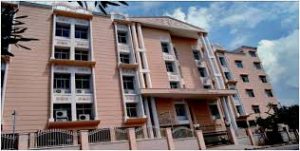
The World Health Organization (WHO) has designated the National Institute of Indian Medical Heritage (NIIMH) in Hyderabad as a Collaborating Centre for “Fundamental and Literary Research in Traditional Medicine” (CC IND-177) for four years.
- This marks the first time a WHO Collaborating Centre has been established for this specific field.
- NIIMH, under the Central Council for Research in Ayurvedic Sciences (CCRAS), Ministry of Ayush, is recognized for its extensive medico-historical research in Ayurveda and related traditional medicine systems in India.
- Established in 1956, NIIMH has contributed significantly through digital initiatives such as the AMAR Portal, which catalogues and digitizes Ayush manuscripts, and the SAHI Portal, which showcases medico-historical artefacts.
- It also maintains a Medical Heritage Museum and Library with rare manuscripts and publishes the Journal of Indian Medical Heritage.
- As a WHO Collaborating Centre, NIIMH will help standardize terminologies for Ayurveda, Unani, Siddha, and Sowa-Rigpa, update the Traditional Medicine Module for the International Classification of Diseases (ICD-11), and assist in developing research methodologies for Traditional Medicine
Grey-Zone Warfare:
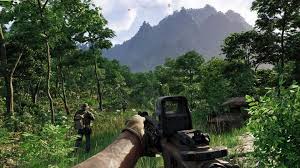
China is using ‘grey-zone’ tactics against Taiwan involving sophisticated methods to frustrate the island’s leadership.
- This includes simulated audiovisuals depicting invasion scenarios and sustained pressure through military sorties and cognitive warfare tactics.
- Grey-zone warfare refers to a strategic approach where aggressors employ a combination of conventional and non-conventional methods to harm adversaries without triggering a full-scale military response.
- It operates in the ambiguous space between peace and overt conflict, utilizing tactics like cyberattacks, economic coercion, disinformation campaigns, and proxy forces to achieve strategic objectives.
Characteristics of Grey-zone Warfare:
- Below threshold operations: Aggressors employ non-military tools that don’t warrant a military response.
- Gradual bold steps: Actions unfold over time, often spanning years or decades, minimizing chances for decisive countermeasures.
- Lack of attributability: Aggressors evade accountability, making it challenging to attribute actions and formulate responses.
- Target specificity: Typically targets vulnerable nations with limited capacity for retaliation due to domestic or strategic constraints.
Musankwa Sanyatiensis : New Dinosaur Species
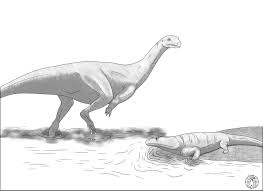
Scientists have discovered fossils of a new dinosaur species, Musankwa sanyatiensis, along the shores of Lake Kariba in Zimbabwe.
- This herbivorous dinosaur weighed around 390 kg and lived in swampy areas during the Late Triassic period (about 210 million years ago).
- It is named after the houseboat used during the expeditions and the Sanyati River flowing into Lake Kariba.
- It is the first dinosaur named from the Mid-Zambezi Basin in over 50 years and only the 4th dinosaur species named from the country.
- Africa has a long history of dinosaur discoveries, with the first found in South Africa just 3 years after the term “dinosaur” was coined in 1842.
- Dinosaurs (a diverse group of reptiles) lived around 243 to 233 million years ago, and diversified into various forms during the Jurassic and Cretaceous periods.
- They include birds, which evolved from theropods, and extinct non-avian dinosaurs.
Global Wind Day 2024:

The Ministry of New and Renewable Energy (MNRE) organised ‘Global Wind Day’ on the 15th June 2024 with the theme of “Pawan Urja: Powering the Future of India”.
- The event aimed at celebrating the success of the Indian Wind Sector and discussing ways to accelerate wind energy adoption in India.
- India has a cumulative installed wind power capacity of 46.4 GW by May 2024 (4th largest in the world) after China, US and Germany.
- Wind energy is crucial for India’s efforts to achieve 50% of its electric power installed capacity from non-fossil fuel-based resources (500 GW renewable energy capacity) by 2030 and net zero by 2070.
- Gujarat, Karnataka, and TamilNadu are leading wind-energy producing states in India.
Monsoon Croaks Bioblitz:
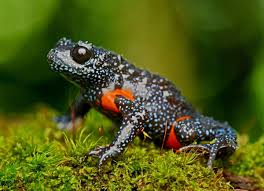
The Kerala Forest Research Institute (KFRI) is organising Monsoon Croaks Bioblitz 2024.
- The “Monsoon Croaks Bioblitz” is a four-month-long public participation science project aimed at documenting the frogs of Kerala during the monsoon season, running from June to September.
- The scientific observations will be part of the Global Biodiversity Information Facility (GBIF) database, which can be used for biodiversity awareness, habitat conservation, species conservation etc.
- The project aims to identify key habitats to protect frogs, which serve as indicators of the ecosystem’s health.
- Factors such as climate change, untimely rainfall patterns, habitat loss, and water pollution are challenging the survival of frogs, leading to 41% of the world’s frogs being on the IUCN Red List of endangered species.
- Kerala alone has more than 200 frog species, emphasising the importance of conservation efforts.
- The topmost observed species is the Wayanad Bush Frog (Pseudophilautus wynaadensis) followed by the Asian Common Toad (Duttaphrynus melanostictus).
- The important amphibian species recorded includes Critically Endangered Resplendent Shrub frog (Raorchestes resplendens), Endangered Malabar Torrent Toad (Blaira ornata), Vulnerable Anaimalai Flying Frog (Rhacophorus pseudomalabaricus) and the Near Threatened Purple Frog (Nasikabatrachus sahyadrensis).
Child Food Poverty: Nutrition Deprivation In Early Childhood
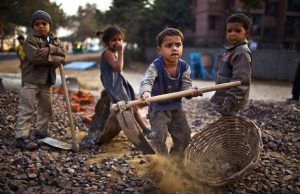
A recent UNICEF report titled ‘Child Food Poverty: Nutrition Deprivation in Early Childhood’ examines the status, trends, inequities and drivers of child food poverty in early childhood.
Key Findings of the Report:
- Approximately 181 million children under the age of 5 years are living in severe child food poverty globally, which accounts for one in four children in this age group.
- According to UNICEF global databases, 2023,in India, 40% of children are living in severe child food poverty.
- Progress in addressing severe child food poverty is slow overall, but some regions and countries are demonstrating that progress is possible.
- Severe child food poverty affects children from both poor and non-poor households, indicating that household income is not the sole factor driving this issue.
- Children living in severe child food poverty lack access to nutrient-rich foods and are increasingly consuming unhealthy foods.
- The global food and nutrition crisis, as well as localised conflicts and climatic shocks, are intensifying severe child food poverty, particularly in fragile countries.
- In vulnerable communities in the Democratic Republic of the Congo and Somalia, more than 80% of parents reported that their child had been unable to eat for an entire day because of a lack of money or other resources.
- Severe child food poverty is a significant driver of child undernutrition.
- The prevalence of severe child food poverty being three times higher in countries with a high prevalence of child stunting.
G7 Summit 2024:
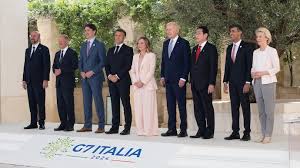
The Prime Minister attended the annual G7 summit held in Italy from 13 to 15th June 2024. This summit marked the 50th anniversary of the group.
- This is his first foreign trip after assuming office for the third straight term.
Key Highlights of the 50th G7 Summit in Italy:
- Promotion to G7 PGII (Partnership for Global Infrastructure and Investment):
- In the 50th G7 Summit, leaders decided to promote concrete G7 PGII (Partnership for Global Infrastructure and Investment) initiatives.
- This initiative was launched by the US and G7 allies at the 48th G 7 Summit in 2022 that aims to narrow the USD 40 trillion infrastructure gap in the developing world.
- It is a “values-driven, high-impact, and transparent infrastructure partnership to meet the enormous infrastructure needs of low and middle-income countries.
- Under this, G7 will mobilise USD 600 billion by 2027 to deliver infrastructure projects to developing and middle-income countries.
- India-Middle East-Europe Economic Corridor (IMEC) aims to create a comprehensive transportation network, comprising rail, road, and sea routes, connecting India, the Middle East, and Europe.
- IMEC was signed at the G20 Summit in New Delhi, in September 2023.
- This project forms part of the PGII.
- The proposed IMEC will consist of Railroad, Ship-to-Rail networks and Road transport routes extending across 2 corridors:
- East Corridor: Connecting India to the Arabian Gulf
- Northern Corridor: Connecting the Gulf to Europe.
- It will also include an electricity cable, a hydrogen pipeline and a high-speed data cable.
- India, the US, Saudi Arabia, UAE, the European Union, Italy, France, and Germany are the signatories of IMEC.




